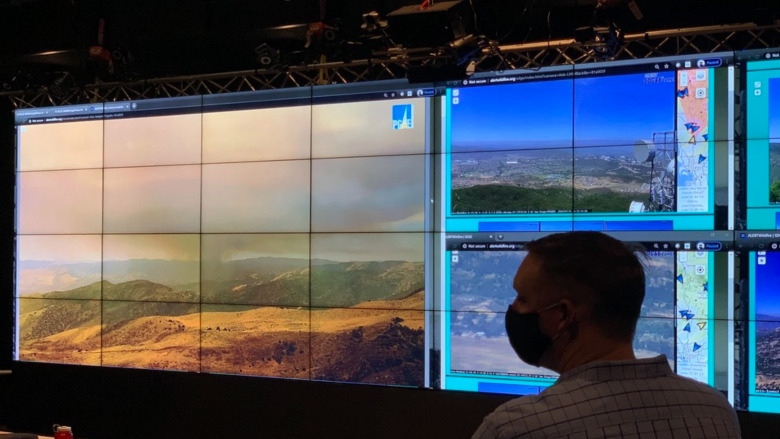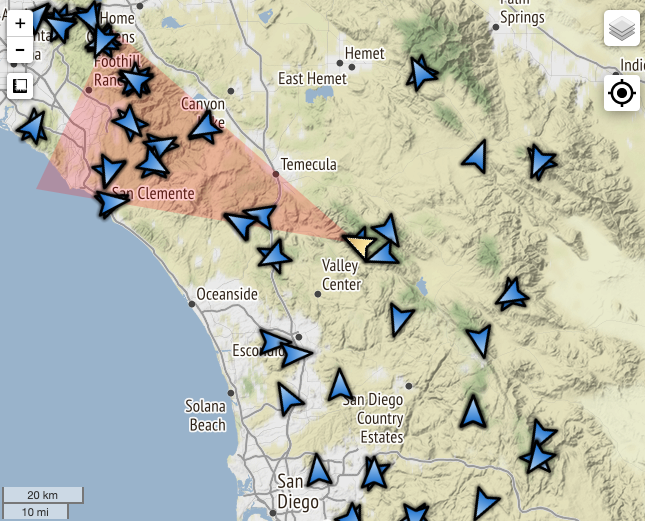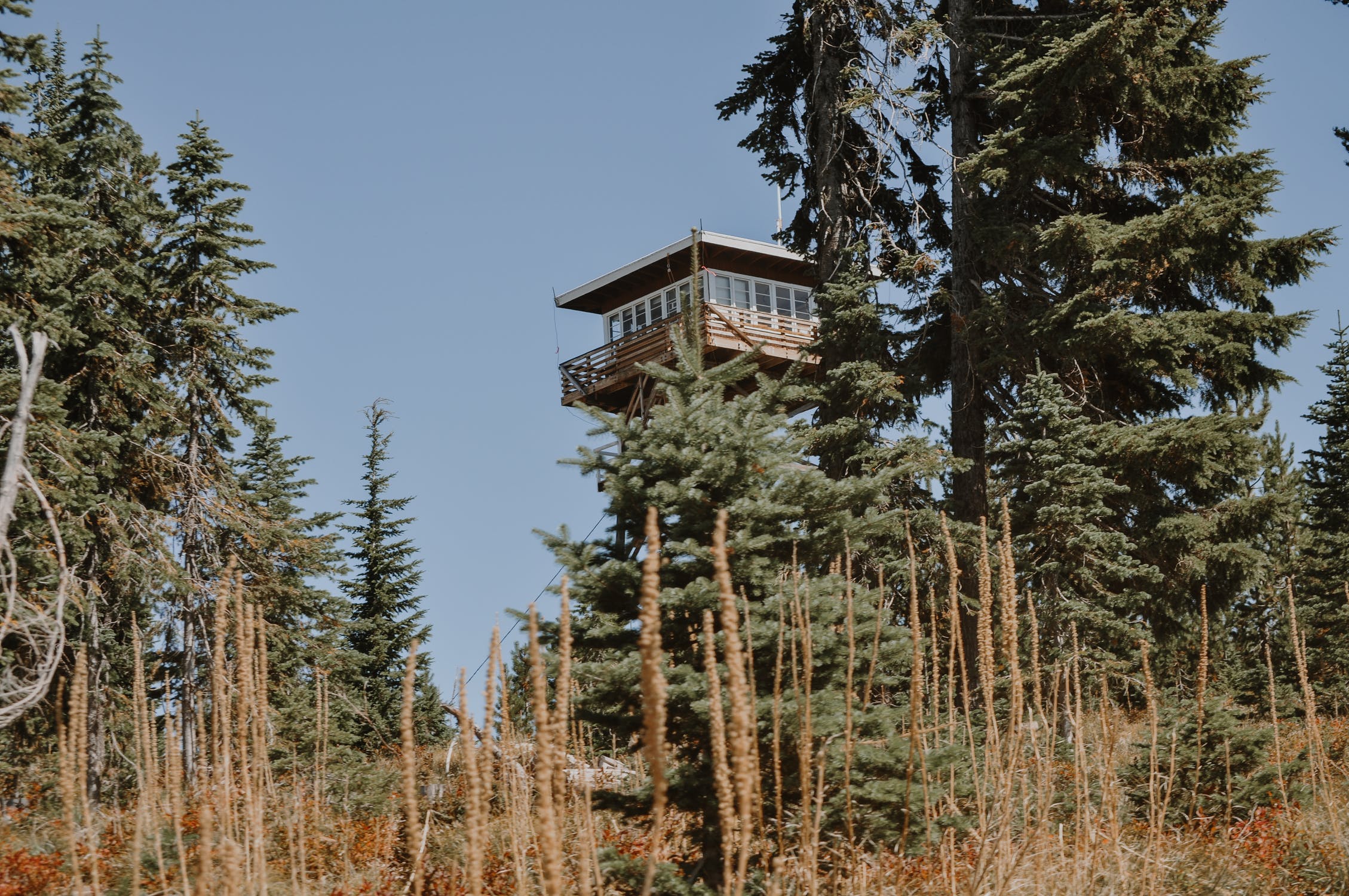Have you ever wondered how fires are spotted or quickly confirmed before crews even arrive? The state of California alone has over 600 cameras that help! Previously, fire tower lookouts provided a necessary function for identifying and fighting new fires. Now, with the growth of technology, cameras throughout wilderness areas have helped firefighters and communities react quicker and smarter when fire emerges.
Monitoring the Cameras

Wildfire surveillance cameras are observed at a video monitoring station at UC San Diego.
Cameras can confirm fires quickly, effectively saving time otherwise used by sending engines to the reported location or launching aircraft to fly overhead. RedZone covered California’s Public Utilities Commission efforts to combat wildfires, including San Diego Gas & Electric adding high definition cameras on ridge tops across the county. ALERTWildfire.org added these cameras to a larger network covering the state.
ALERTWildfire was established in 2016 as a congregator of cameras in California, as well as Nevada and Oregon. Anyone with Internet access can visit the site leading to a map of numerous cameras. In addition to quickly spotting fires, the cameras are key to decision making when leaders can immediately gage how much manpower they will need and when to evacuate specific areas. It also allows homeowners to monitor fires themselves that could potentially threaten their communities.
About the Cameras
As previously mentioned, public utilities companies are key partners with ALERTWildfire in part of companies’ wildfire mitigation plan. For example, Southern California Edison has installed over 150 high-definition cameras that visually cover nearly all of the company’s high fire risk areas. The cameras also work with electric company weather stations to help determine when to shut down power service during peak fire weather conditions.

Cameras in Southern California available on ALERTWildfire.org.
The cameras, many solar powered, are able to pan, tilt, zoom and perform 360-degree views every two minutes. They provide near-infrared night vision views as well. In clear weather, a camera can view as far as 60 miles away and at night, 120 miles. There is also a time-lapse function available to both firefighters and the public to review. The easy accessible camera-network site has been particularly helpful for local fire watch groups during the COVID-19 pandemic.
The network has grown rapidly with 700 cameras across six states. The program set a goal of 1,000 cameras by the end of 2022.
Sources: The OCR, ALERTWildfire





One Comment